D&D 5e Supplement Review: The Book of House
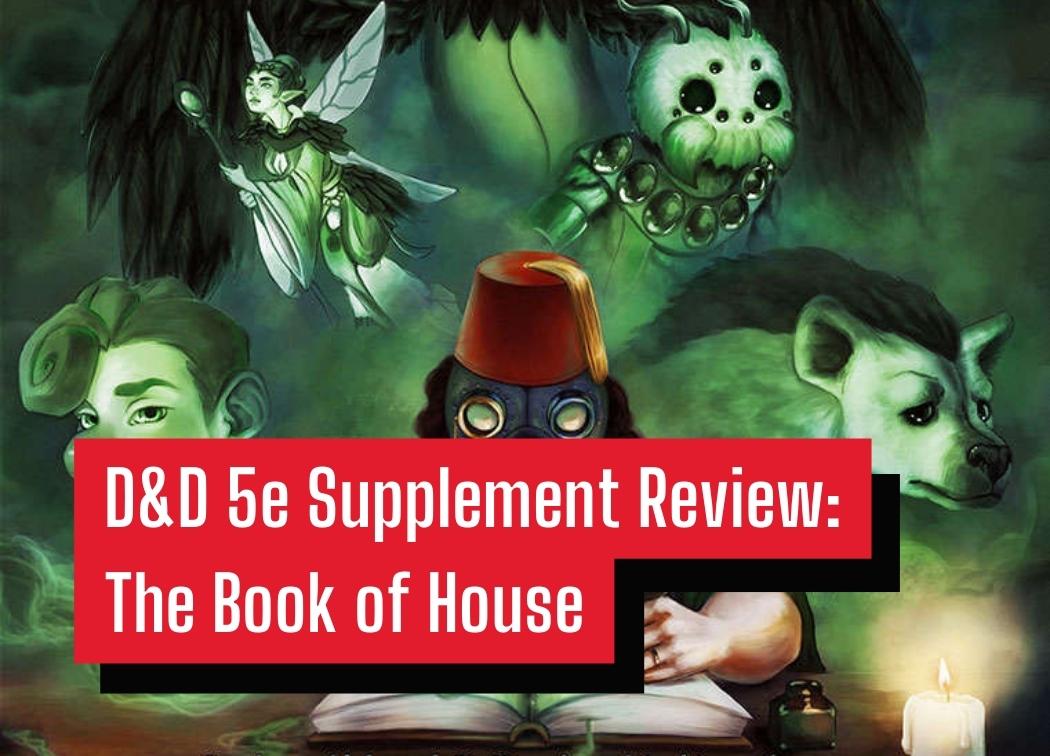
Have you ever wanted to play as a bard that’s also Guy Fieri, but also a clown? Have you ever wanted to be a spider person monk that’s also a butler? If your answer is “yes” then pick up The Book of House on the Dungeon Masters Guild right now!
If your answer is “what is happening right now?” then you are just like me a week ago when I first got an early look at The Book of House. This is a new D&D 5e supplement by Willy Abeel that contains outrageous new races, backgrounds, subclasses, spells, magical items, and game mechanics, and it’s spectacular.
The book includes notes and narrations by a mysterious character, Sir House of Barovia, similar to Xanathar in Xanathar’s Guide to Everything. It adds a lot of flavor and is a fun addition to the book. Of course, Sir House has a few spells, magical items, and more named after them in the book!
Let’s dive into the specifics, though because there are 95 pages of ridiculous (in the best way) content to cover!
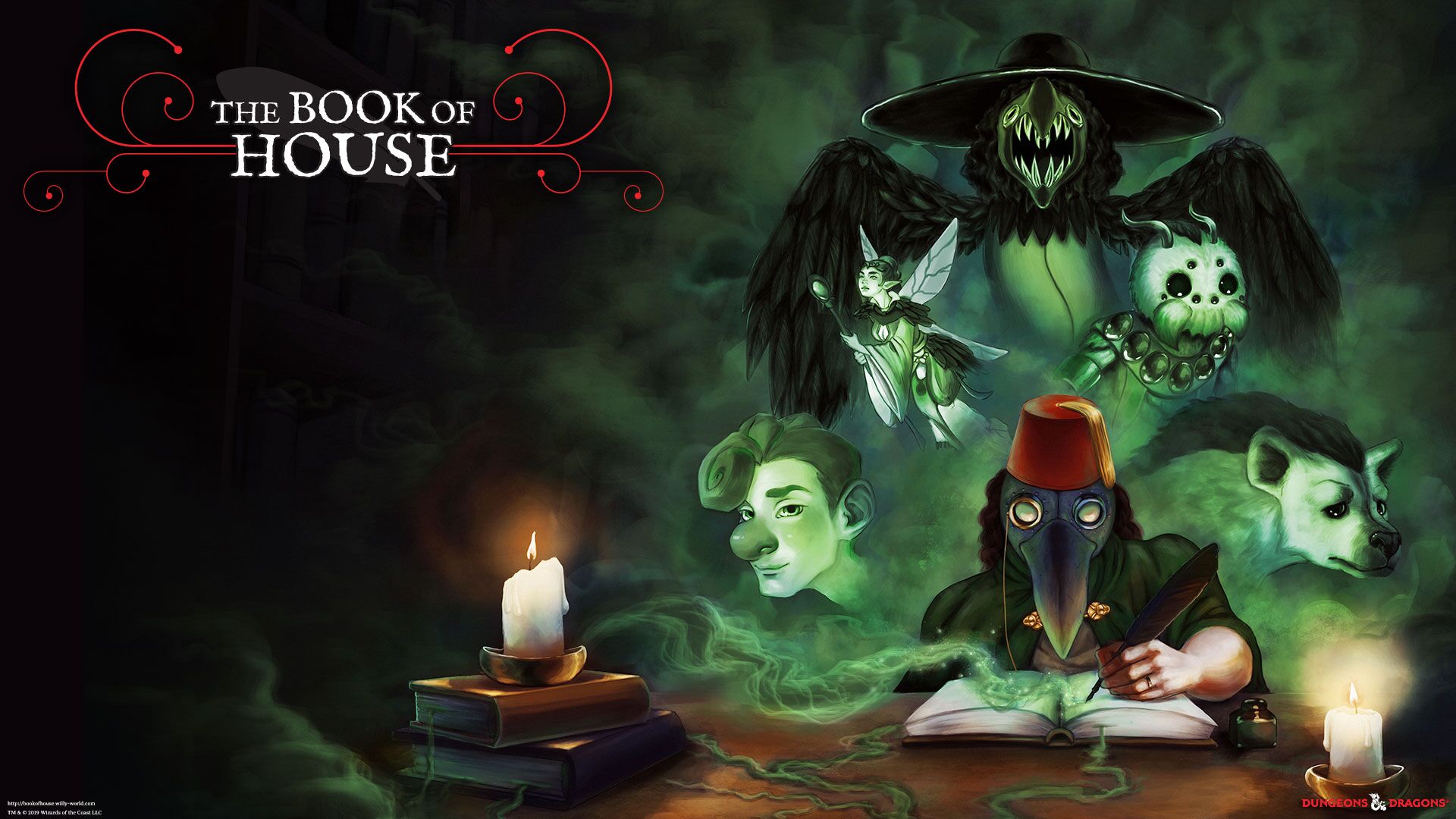
Excellent Formatting and Readability
A lot of homebrew content that I come across (mine included) tries its best to copy the exact style and design as Wizards of the Coast. The Book of House takes the format and respects it, but adds its own flair and personality to it. It’s appreciated and it makes the book feel special.
Everything is still organized and formatted in a similar manner to any official D&D 5e book. However, slight differences such as the color scheme or some additional side-bars about the content add a lot in my opinion.
The book itself is well-written and has clearly spent some time being thoroughly proofread. The new mechanics were easy to understand and didn’t require me to reread them multiple times to pick them up.
Another thing I would like to mention are all the bookmarks in the PDF. This was so convenient for my read-through since I didn’t do it in a single sitting. It’s also been fantastic for referencing certain sections or talking to my friends about a specific subclass very convenient.
Fantastic Artwork
Personally, I don’t find that artwork makes or breaks 3rd party RPG content for me. The whole purpose of this type of content is that this content was created by a single person or a smaller studio so they won’t have the resources or budget a company like Wizards of the Coast has for artwork.
Therefore, I try not to let it have much of an impact on my decision of a book or adventure.
The keyword is “try”. The Book of House has amazing content for sure, but the artwork is absolutely top-notch. The talented group of artists that worked on this book deserves so much praise for the fantastic job that they all did throughout the book.
Gorgeous artwork adorns the vast majority of the pages of this book. In this scenario, I would definitely say that the spectacular artwork has increased the value of the book by a noticeable amount.
Unique, Flavorful, and Fun Content
Clonn, a New Race
A key feature of The Book of House is the completely new race, the clonn. I’ll admit that I was super skeptical when I opened the book and saw that there was an entire chapter dedicated to a deep dive into the lore and history of a race of clown people.
However, the clonn quickly won me over. They are essentially the antithesis of humans in D&D. Humans are viewed as a race of short-lifespan people who work hard to become masters of their craft. They make the most of the short lives they have.
The clonn? Well, they try. They are naturally skilled at all sorts of things. A clonn will have many different professions in their lifetime. However, they’re not great at any of them no matter how long they try or how dedicated they are to their craft. They’re the ultimate “jack of all trades, master of none” people.
The clonn have their own religion, customs, and even a unique language which is composed entirely of sign language. They can be goofy, but there’s plenty of substance to still make a great, serious D&D character out of one.
Clonn Mechanics
Mechanically the clonn play into their background and lore perfectly. They have absolutely no ability modifiers which really plays into their “master of none” identity. They are born with what they’ve got.
Understandably, not having ability scores should come with some solid racial features. Trust me, they have some excellent ones.
For starters, they have resistance to bludgeoning damage which is a common damage type so this is a super valuable resistance to have.
The real meat of their mechanics is their Polymathic feature. This allows them to boost any of their skill check modifiers by a flat amount provided that they have a modifier of a 0 or 1 without adding your proficiency bonus. They can become the ultimate skill monkey character. You will never be bad at anything.
They also get a choice of two different combat utility abilities. One gives you some extra defenses and the other gives you some extra mobility. There’s also a feat to unlock a 3rd one that can increase your damage. You can continue to take this feat until you learn all 3 if you so desire.
Other Races
There are three additional races in The Book of House beside the clonn; tempered gnolls, sprites, and tula. All of these have a direct tie-in to D&D lore so they’re much easier to introduce into a game than the clonn if you’re more of a D&D purist.
Tempered Gnolls
Tempered gnolls are a select few gnolls that were able to rid themselves of Yeenoghu’s hunger and their innate desire for bloodshed. As you can imagine, tempered gnolls are absolute beasts on the battlefield.
They revolve around this trait called blood rush which kicks in after your current hp is less than 1/2 of your max hp. Once blood rush activates, you gain additional speed and damage from melee attacks, but you reduce your AC by 2. You become an unstoppable behemoth on the front-lines.
Well, until they drop to 0 hit points. Tempered gnolls have a trait called Feral Regression which forces them to make a DC 14 Wisdom saving throw. If a tempered gnoll fails this saving throw they gain a regression level. Regression levels grant levels of Madness from the Dungeon Master’s Guide and eventually cause you to lose control of your gnoll.
If you like high-risk, high-reward play then the tempered gnoll is for you. If you really, really like this playstyle then there’s a flind variant that ups the ante even higher.
Sprites
Sprites are tiny sized creatures which I could see as being a bit of an issue in actual play. That being said, their tiny size and magical wings grant them some additional AC, mobility, and some cool magical abilities.
They’re also fey and not humanoids meaning that certain spells like Hold Person won’t affect them which is huge.
There are 3 different subraces that are all modeled after the different feywild courts. Each subrace has a different unique ability which is essentially a free spell. However, when a sprite is in the feywild they can use this ability repeatably without needing to rest.
The downside to playing a sprite is that it’s going to be tough to find equipment due to your size, and you sacrifice some Strength and hit points to gain these fantastic traits.
Tula
Tula are my personal favorite out of the four. They have the lower body of giant spider-like a drider, but instead of a drow’s torso they have some freaky humanoid-like spider with extra arms.
They’re small creatures with all of the typical traits you’d think a spider creature that is considered to be a “blessing of Lolth” would have; spider climbing, web walking, and darkvision. However, they also have those extra hands, but they don’t come into play right off the bat.
There are two different tula subraces. One is martial-centric which lets you use your extra hands to hold a simple, light weapon and get an extra attack in. The other is caster-centric and lets you use your extra hands to perform the somatic components of spells and cast a weaker version of a cantrip as a bonus action.
Subclasses
College of Culinary Bard
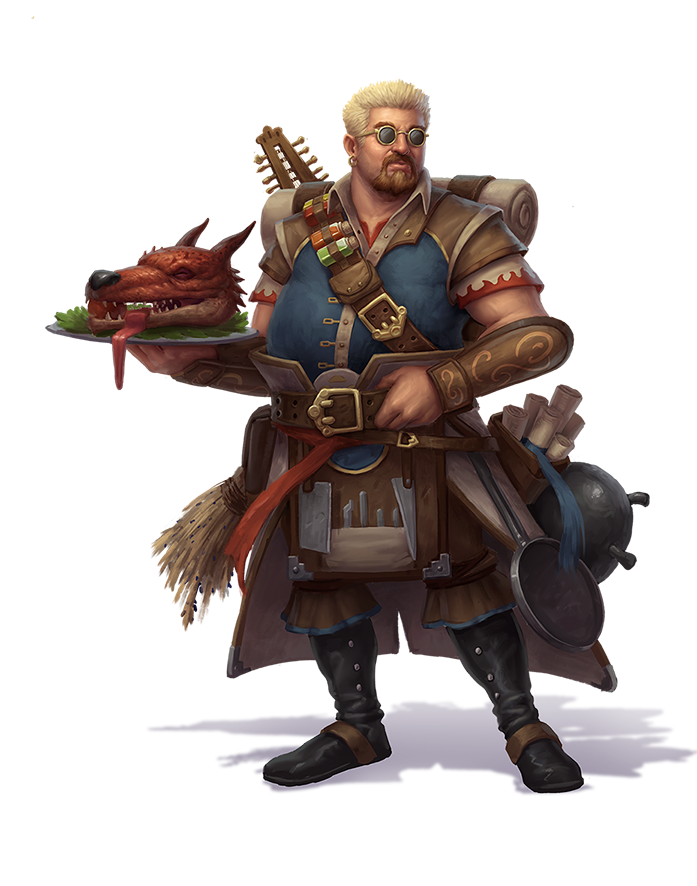
I mentioned Guy Fieri earlier. Gaze upon the amazing artwork in his likeness and tell me that doesn’t speak to you on some otherworldly level. However, this artwork is more than a meme. This is the true physique of a College of Culinary Bard.
The College of Culinary imparts knowledge of seasoning and sautéing onto a bard. Instead of using their musical instrument to cast spells and dish-out Bardic Inspiration they can use cooking utensils. To no surprise, The Book of House has a table of cooking utensil weapons such as a Wok that can count as a shield.
In addition to this, College of Culinary Bards can use their Bardic Inspiration to cook up excellent meals and snacks to give their party members long-term and short-term buffs. These become more powerful with the use of a large number of fresh ingredients and also increase in power as you level up.
You can also destroy your foe’s attention spans by cooking in the middle of the battlefield. You can use your Bardic Inspiration to force enemy creatures around you to make a Wisdom saving throw. If they fail they suffer a penalty on their attack rolls.
There’s a lot of great flavor and utility in this subclass and of course, plenty of role-playing opportunities as you seek out fresh ingredients to use in your various dishes!
Way of the Caretaker Monk
The Way of the Caretaker Monk is an homage to many tropes such as the dedicated personal bodyguard or the butler that inexplicably is an absolute hand-to-hand combat badass.
The gist of this subclass is that you are physically hardy and can take a punch better than any other monk. However, instead of selfishly using this natural stamina to further your own goals, you dedicate your life to protecting your friends and allies.
You can spend ki points to rush around the battlefield and block incoming missiles or melee attacks on adjacent allies. Eventually, you become so powerful that you can straight-up rush over to your allies to protect them even though it’s not even your turn.
At 17th level things get really wacky. You’re able to split yourself into up to 4 clones and can simultaneously protect the entire party.
If you fight for your friends and your sole purpose in life is to protect your allies, this is the subclass for you!
Mind Trapper Ranger
Perhaps one of the most out-there ideas in The Book of House is a ranger archetype for expert trackers with latent psychic powers. Why bother setting traps on the ground when you can literally Mind Trap your foes?
You learn up to 5 Mind Traps which at first cost an action to use, but eventually become a bonus action use with AoE capabilities. Mind Traps primarily revolve around crowd control and dealing psychic damage, but there’s truely a Mind Trap for every occasion.
You’re still a ranger, so tracking should still come naturally to you. But why bother with that when you can literally set a tracking beacon inside someone’s brain? At 3rd level, you get a pseudo-Scrying which lets you see through the eyes of a creature you set your tracking beacon on as long as they’re within 1 mile of you.
A lot of people say that the ranger class is weak in 5th edition. I agree. They clearly needed psychic powers.
Merchant Rogue
I came into this chapter of the book expecting the Merchant Rogue to be the mildest out of all five subclasses. I was in fact, duped.
First thing’s first, you can choose a chest or some other container and it becomes a magical bank. The gold you deposit inside of it accrues interest.
Next, you get a lucky coin which lets you check the amount of money in your bank, deposit money that you’re carrying, or withdraw money directly from your bank. All of this can be done from anywhere.
Yes. You get a credit card.
Now here’s where things start to get really wild. As you level up you can do all of the regular merchant stuff like know how to sell stuff and be able to appraise items. However, you can also spend money to do stuff like change how your Sneak Attack dice work or give yourself advantage on an attack.
So make some solid investments and be aggressive with your portfolio and you can become the most powerful rogue in all the land. Or you know, lose it all in a single combat encounter because you spent 1000s of gold turning your sneak attack dice into d20s.

Residual Magic Sorcerer
The identity of a Residual Magic Sorcerer is similar to that of other Sorcerous Origins. Some ancestor of the sorcerer was so powerful that even just a tiny amount of their blood gave our hero fantastic powers.
The difference between them and a Residual Magic Sorcerer, though is that this Sorcerous Origin comes from a line of powerful wizards. So powerful that you have inherited some of their magical knowledge and abilities.
Right off the bat, you choose a school of magic and you get a wizard spell based on your decision. The cool thing about this, though is that you can replace this spell with another spell of the same school in the wizard spell list, giving you access to a super unique and powerful spell.
You also gain a unique Metamagic option based on which school of magic you chose. Each one is tailored to their school of magic. For example, the transmutation one lets you change the damage type of a spell to a different damage type provided that the damage types are on a preset list.
If you’re looking to bend the rules of magic and push a school of spellcasting to its limit then the Residual Magic Sorcerer is right up your alley.
Lycanthrope Rules and Forms
Lycanthrope is pretty cool. In fact, I had a whole campaign where the party managed to get themselves all inflicted by this awful curse.
The annoying part of lycanthrope though is that the rules and mechanics for it aren’t super interesting. You pretty much just turn into the creature that inflicted the curse upon you. The Book of House has some new lycanthrope rules that modify the character’s race once they become a lycanthrope.
For starters, they gain some new traits, actions, and ability score adjustments based on their form. There are a total of 10 different forms in the table some of which are iconic forms like the werewolf, wereboar, and werebear. Then you have ridiculously awesome forms like the werewasp and my favorite, the wereshark.
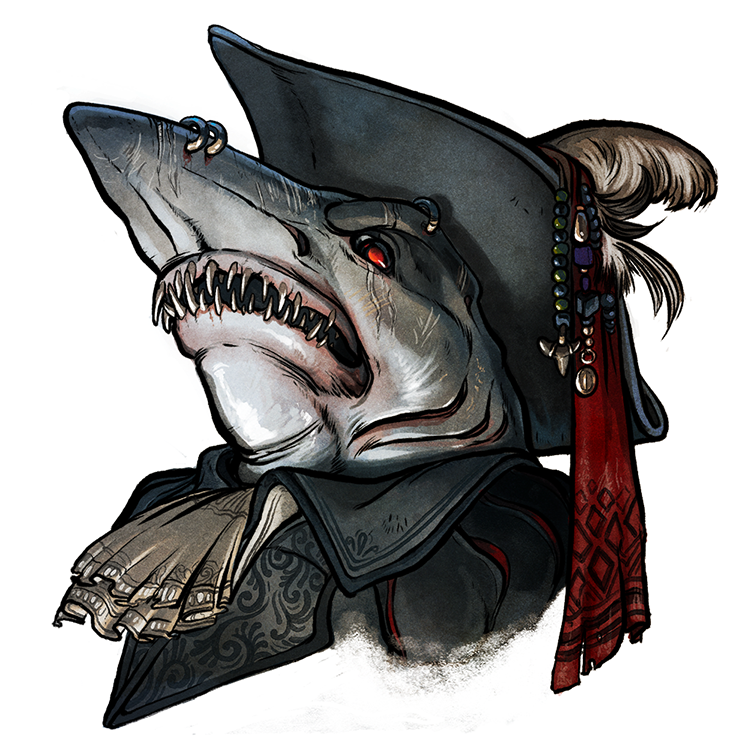
Your character also gains the same Feral Regression trait that the tempered gnolls have. If you’re dropped to 0 hp you have to make a Wisdom saving throw, but this time it’s based on your lycanthrope form. The more powerful the form, the higher the DC. The higher the DC, the more likely you are to lose control of your character.
I found these rules to be both fun from a player’s perspective, but easy enough to manage for the DM. Instead of having to pull up statblocks you now have a simple table that tells you and the player everything you need to do to modify a character to become a lycanthrope.
Backgrounds & Customization
There are 10 new feats in addition to a bunch of new backgrounds. The feats revolve around the different races in the book. Each race gets 2-3 feats to choose from. The gnoll traits are cleverly shared with lycanthropes since the prerequisite to take them is to have or have had the Feral Regression trait.
There are feats to empower your feral nature or resist it for gnolls and lycanthropes. There’s a feat to change the size of an item to make it usable for your sprite.
However, my personal favorite feat is Detachable Limbs. This allows a tula to rip off a primary arm, auxiliary arm, or leg to create a nonmagical +1 weapon. Their limb will eventually regrow, but in the meantime, you’ll have some type of mechanical consequence to deal with. The more important the limb, the direr the consequence is.
I mentioned new backgrounds. Well, to specify, these are all new Clonnish Backgrounds. Though they’re geared towards clonns, any race can take these backgrounds!
My favorite by far is the Rodeo Rancher background which has a unique feature that lets you discern if a rope will snap or a knot is loose. You’ll also be able to know how much rope you’ll need to wrangle a moving creature.
Magic Items
There are 10 new magical items in the book, but the real treat is the replica magic item rules. Players can essentially recreate magical items, but it comes at a price.
Creating a replica magic item is both an expensive process and an imperfect art. When you create a replica magic item, the item is understandably less powerful than the magical item it is based on.
There is a whole table of replica flaws that the DM can use to determine what the replica magic item’s flaw will be. They can also use this table as a guideline to create their own flaws if they so choose. There are also rules for creating a replica artifact which have even more potent flaws.
It is possible to upgrade or fix a replica magic item, but it’s costly and it requires the steady hand of a master craftsman. Depending on the replica, it may be a dangerous task to do so at all!
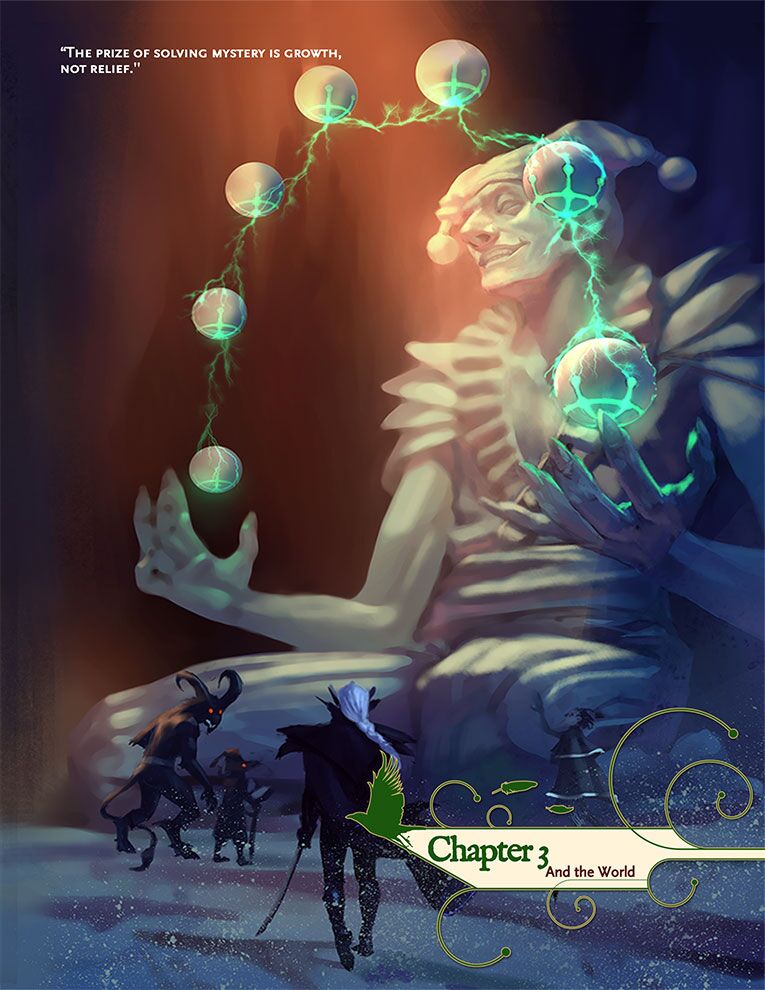
New Spells
There are a total of 12 new spells in The Book of House, most of which being some flavor of Enchantment or Illusion which is great to see. It’s also not entirely unexpected to see in this book since they’re some of the more “out there” schools of magic.
I think my favorite is Feel Fit/Feel Ill. It reminds me a lot of Enlarge/Reduce which was one of my favorite low-level utility spells my Wild Magic Support Sorcerer made plenty of use of. Essentially, you can give an ally a feeling of vigor, increasing their speed and giving them some temporary hit points. Conversely, you can slow an enemy and deal some necrotic damage.
Every caster class gets at least 3 of these spells to potentially add to their arsenal. Bards, Druids, Wizards, and Warlocks also get 1 or 2 of the new cantrips as well. The highest level spells on the list are at 5th level, so there’s nothing terribly game-breaking being added into the game in terms of spell level.
Homebrew Combat Mechanics
There are all kinds of fun stuff for DMs included in the last chapter of the book. For example, there are quite a few new homebrew combat mechanics to spice up your combat encounters.
All of these can revolve around a new mechanic called Battle DC which is essentially a rule that gives DMs an easy way to determine the DC of something that the players do. If a player wants to do something out of the ordinary and it has no set saving throw, simply call for their Battle DC which is 10 + the ability modifier used for the action.
From there you can determine a lot of the outcomes for the rest of the homebrew mechanics such as Attacking Specific Locations, Inflicting Conditions, or any of the additional actions listed in the last part of this section. The additional actions give 2-3 new actions that a character can take for each unique ability score.
My favorite, though, is the Difficulty Scale rule. Instead of calling for an ability check or saving throw and having the outcome be either a pass or a fail, you use the DC of the check as a guideline. If you hit the DC dead-on it’s a success. The higher you roll in comparison to the DC, the better the success is. However, the lower you roll, the worse the outcome could be.
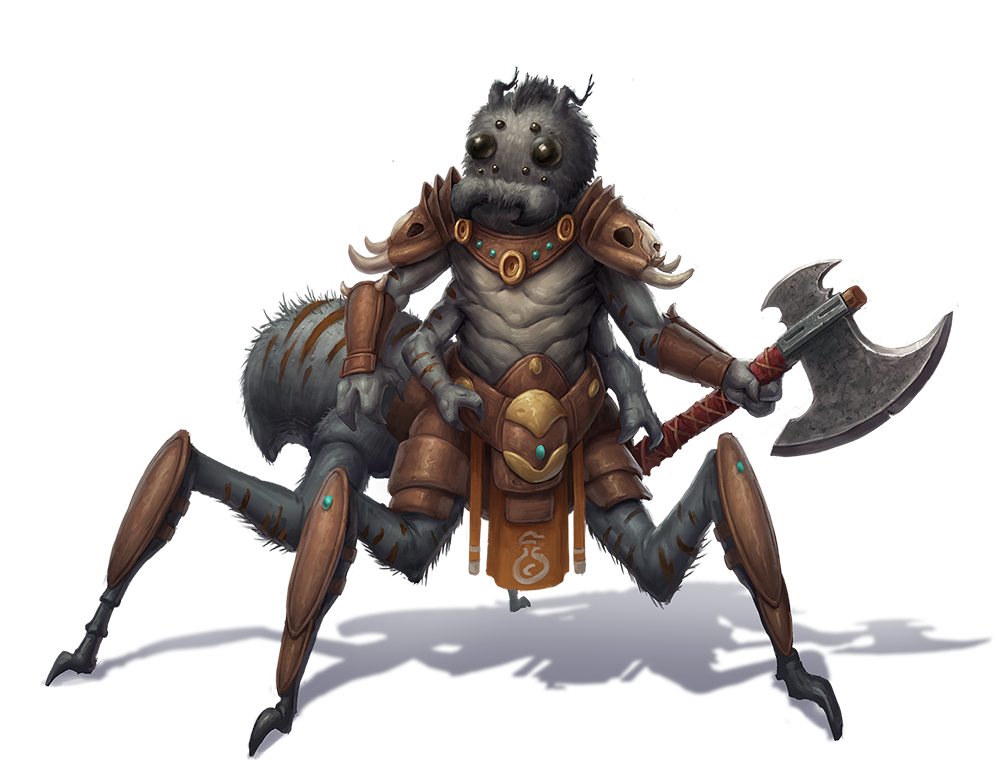
Monster Modification
I’ve talked about how the DM can reskin or reflavor creatures to change things up on your players. There’s a lot of value to this the more experienced your players are with a specific game system. D&D especially since a lot of these creatures have been used in prior editions or are prominent in folklore.
Somehow I’ve never thought of changing a creature’s personality and using it as a way to change-up their base mechanics.
There are 12 different creature personality types in the Monster Modifiers section. You can either roll 1d12 to randomly get one from the table or select one that fits best your creature or encounter.
Some of these personality types have numerical changes to their statblock such as a bonus to their attack or damage. Others get benefits such as an additional attack on a reaction or damage resistance. Some have a bit of both.
Regardless, each personality type gives your creature a unique playstyle and keeps your players on their toes. They’ll never know what their next encounter will be. Is it going to be a foaming-at-the-mouth ferocious dire wolf or a volatile goblin?
There are a bunch of example creatures that make use of these modifications within this section of the book. All of these creatures have taken inspiration from something in the book as well.
Final Thoughts on The Book of House
All in all, I thoroughly enjoyed this book and I’m excited to let my players run wild with it. There’s something for everyone in The Book of House, whether you want some fun new mechanics, new spells, or character options, it’s got it all. Plus absolutely fantastic, high-quality artwork everywhere.
The contents of The Book of House are unique and seriously inspired. It’s not just a rehashing of 5e mechanics that we’ve seen before or one or two new things added into the mix. Everything is new, completely different, but at the end of the day, it still feels like D&D 5e.
You can tell that Willy Abeel has been working on this for a year. The amount of effort and creativity that’s gone into this book has not gone unnoticed. If you’re looking for a fun new take on D&D 5e content pick up The Book of House.
